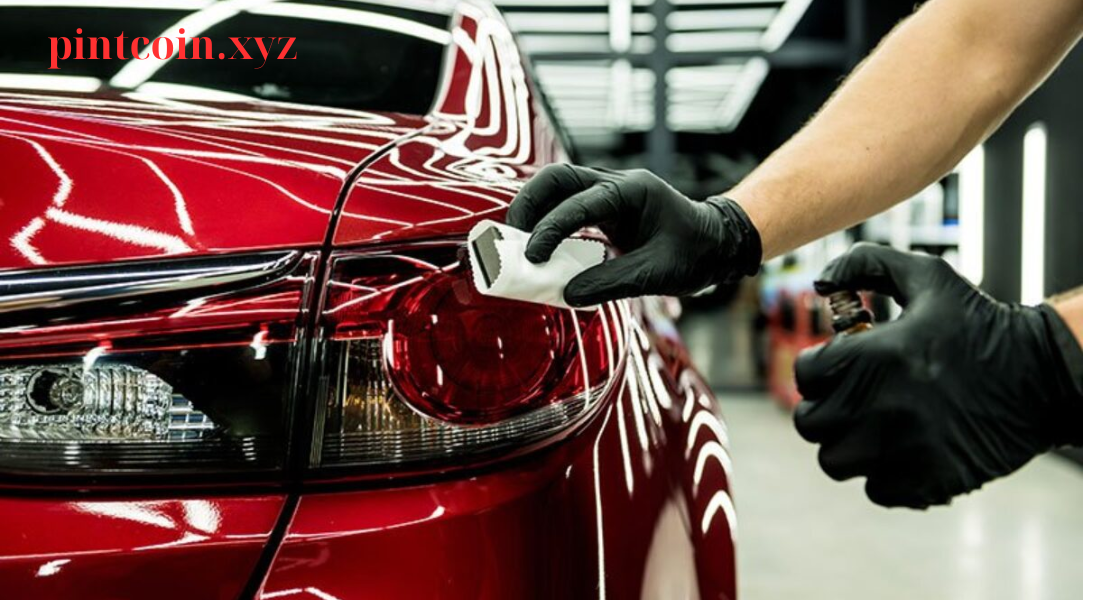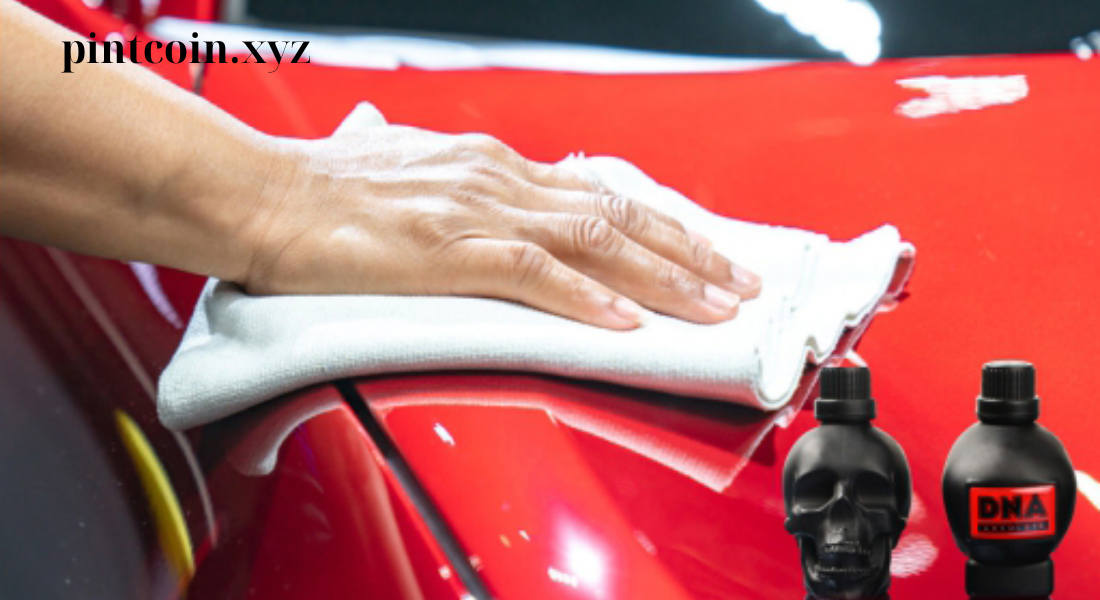Blog
Ultimate Guide to Ceramic Coating Application Protect and Perfect Your Cars Finish
Ceramic coating application has revolutionized the way car enthusiasts protect and enhance their vehicle’s appearance. This advanced technology provides a durable, glossy finish that repels dirt, resists scratches, and preserves your car’s paint for years. Whether you’re a DIY enthusiast or considering professional installation, understanding ceramic coating application is the first step to achieving a long-lasting, showroom-quality finish. Let’s explore how ceramic coating works, the application process, and key tips to get the best results.
Ceramic Coating Application: What Is It and How Does It Work?
Ceramic coating is a liquid polymer applied to the exterior of a vehicle, bonding with the paint to create a protective layer. Unlike wax or traditional sealants, ceramic coating chemically bonds with the surface, forming a long-lasting, high-gloss barrier against environmental contaminants. This coating offers exceptional resistance to UV rays, water, and pollutants, keeping your car looking fresh and vibrant.
Benefits of Ceramic Coating Application
Ceramic coating provides several advantages, from aesthetic appeal to long-term protection. Here’s why more car owners are turning to ceramic coating for their vehicles:
- Enhanced Durability: Ceramic coatings last for years, far longer than waxes or sealants, offering extended protection against minor scratches and swirl marks.
- Water and Dirt Repellency: The hydrophobic properties of ceramic coating mean that water, dirt, and grime slide off easily, making washing a breeze.
- UV Protection: By shielding the paint from UV rays, ceramic coating prevents fading and oxidation, preserving the car’s original color.
- Glossy, Mirror-Like Finish: Ceramic coating application creates a deep, reflective shine that rivals the look of a new car, adding to its aesthetic appeal.
How to Prepare for Ceramic Coating Application
Proper preparation is key to a successful ceramic coating application. By following these steps, you’ll ensure that the coating bonds effectively with the paint for a smooth, flawless finish:
- Thorough Wash: Begin by washing your car with a pH-neutral soap to remove surface contaminants. Pay special attention to dirt and debris that may be hiding in cracks or seams.
- Clay Bar Treatment: Use a clay bar to remove embedded contaminants like tar, sap, and industrial fallout from the paint. This step ensures a clean, smooth surface.
- Paint Correction: If your car has swirl marks, scratches, or oxidation, consider performing a paint correction. This step restores clarity and provides an ideal foundation for the coating.
- Final Wipe Down: After paint correction, use isopropyl alcohol (IPA) or a dedicated prep solution to remove any remaining oils, ensuring the surface is free of residues before applying the ceramic coating.
DIY Ceramic Coating Application: Step-by-Step Guide
Applying ceramic coating can be a satisfying DIY project with the right tools, patience, and attention to detail. Here’s a step-by-step guide for those ready to tackle ceramic coating application at home:
- Choose a Suitable Environment: Apply ceramic coating in a dust-free, shaded area with moderate temperatures. Avoid direct sunlight, as it can cause the coating to cure too quickly.
- Read Instructions Carefully: Each ceramic coating product has unique instructions, so be sure to follow the manufacturer’s guidelines closely.
- Apply the Coating in Small Sections: Use a foam applicator pad to apply the coating in small, manageable sections (about 2×2 feet). Apply a few drops on the pad and spread it in a crosshatch pattern to ensure even coverage.
- Watch for Flashing: After a minute or two, the coating will start to “flash,” appearing slightly hazy. This indicates that it’s time to buff off the excess.
- Buff with a Microfiber Towel: Using a clean microfiber towel, gently buff the coated area to remove excess product and enhance the shine. Be careful not to press too hard to avoid disturbing the curing process.
- Repeat for the Entire Car: Continue applying and buffing in small sections until the entire car is coated.

Tips for a Successful Ceramic Coating Application
Ceramic coating application requires patience and precision. Here are some extra tips to achieve a flawless result:
- Use Quality Microfiber Towels: Invest in high-quality microfiber towels to avoid scratching the paint and ensure a smooth, streak-free finish.
- Apply Evenly: Avoid applying too much coating at once, as this can lead to streaking. Use only the amount recommended in the product instructions.
- Avoid Cross-Contamination: Use different towels for different steps, and avoid reusing towels that have touched uncoated areas.
- Check for High Spots: After buffing, inspect each section carefully for “high spots,” which are areas where excess coating has not been buffed away. High spots may appear as darker patches and can become permanent if not addressed immediately.
Post-Application Care: How to Maintain Your Ceramic Coating
Once the ceramic coating application is complete, proper maintenance will help preserve its effectiveness and shine. Here are some key maintenance practices:
- Avoid Washing for a Week: Allow the coating to cure fully by avoiding washing for at least seven days after application.
- Use pH-Neutral Soaps: When washing your car, choose pH-neutral soaps to avoid stripping away the coating.
- Regular Maintenance Washes: Schedule regular maintenance washes every two weeks to remove dirt and contaminants that could degrade the coating over time.
- No Harsh Chemicals: Avoid using abrasive cleaners or harsh chemicals, as these can damage the coating. Stick to gentle, ceramic-safe products for cleaning.
Professional vs. DIY Ceramic Coating Application: What’s Best for You?
While DIY ceramic coating application can be cost-effective and rewarding, professional installation has its advantages. Here’s a quick comparison to help you decide which option is best:
- DIY Application: Ideal for those who enjoy hands-on projects and are confident in their ability to follow instructions carefully. DIY application costs less, but the results depend on the quality of preparation and precision during the application process.
- Professional Application: A professional ceramic coating ensures flawless coverage and often includes a warranty. Professionals use specialized tools, controlled environments, and expert techniques, making it a good choice for those seeking long-lasting, top-tier protection.
Common Myths About Ceramic Coating Application
There are a few misconceptions surrounding ceramic coating that can lead to unrealistic expectations. Let’s clear up some of the common myths:
- Ceramic Coating is Scratch-Proof: While ceramic coatings are highly resistant to minor scratches, they are not entirely scratch-proof. Using proper washing techniques is still essential to avoid scratching the coating.
- No Need to Wash the Car: Although ceramic coating repels dirt and water, regular washing is necessary to maintain its effectiveness. It’s a protective layer, not a self-cleaning solution.
- Permanent Protection: Ceramic coating is long-lasting but not permanent. Regular maintenance is essential, and reapplication may be necessary after several years.
Conclusion
Ceramic coating application is a valuable investment for anyone looking to protect their vehicle’s finish, enhance shine, and reduce maintenance time. Whether you choose a DIY approach or seek professional application, ceramic coating provides a durable, high-gloss finish that keeps your car looking its best. With the right preparation, application, and care, ceramic coating can transform the way you protect and maintain your car’s exterior, ensuring a like-new look for years to come.


